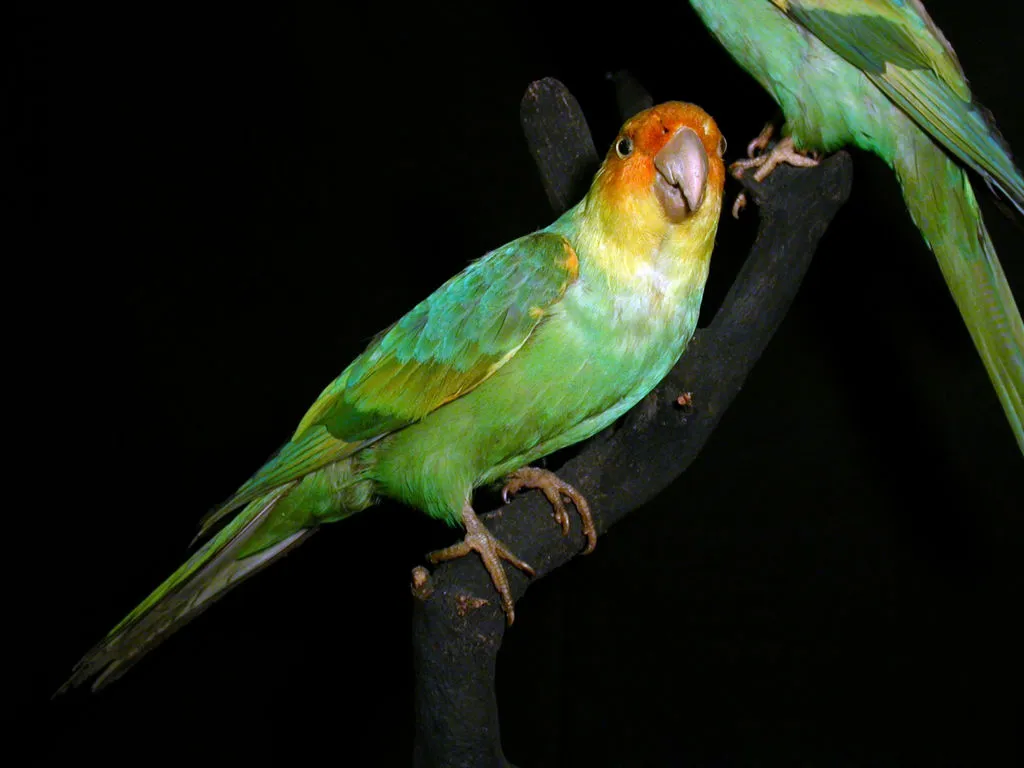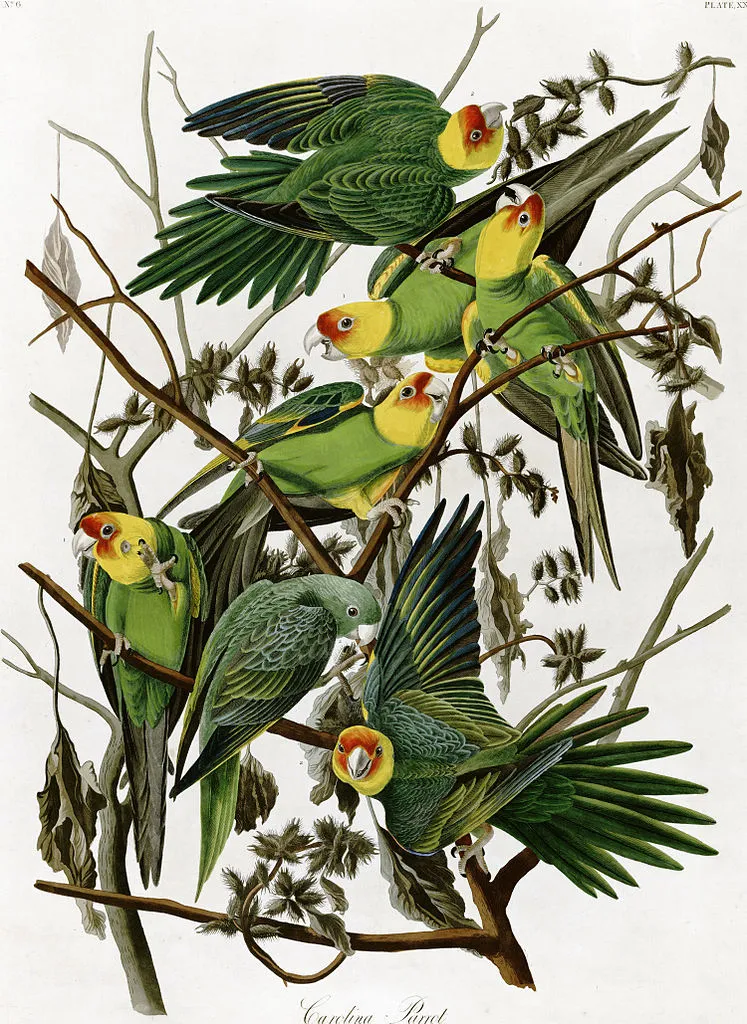The Carolina parakeet or Carolina conure scientifically known as Conuropsis carolinensis is an extinct species of bird now.It was a small green neo-tropical parrot with a shiny yellow head, reddish orange face and pale beak native to the eastern, midwest and plains states of the United States and was the only homespun parrot within its range. It was usually found in southern New York and Wisconsin to Kentucky, Tennessee and the Gulf of Mexico, from the Atlantic seaboard to as far west as eastern Colorado. It was native in old-growth forests along rivers and in swamps.It was usually called puzzi la née (which means "head of yellow") or pot pot chee by the Seminole and kelinky in Chickasaw.

Carolinensis is a species and its genus is Conuropsis, one of numerous genera of New World long-tailed parrots in tribe Arini, which also includes the Central and South American macaws. Tribe Arini along with the Amazonian parrots and a few miscellaneous genera make up subfamily Arinae of Neotropical parrots .This species has two recognized subspecies. These are Louisiana subspecies of the Carolina parakeet, which was slightly different in color than the nominate subspecies, because of being more bluish-green and generally of a somewhat subdued coloration, and became extinct in much the same way other species got extinct. The Appalachian Mountains segregated these birds from the eastern C. c. carolinensis.

The Carolina parakeet was first colonized in North America about 5.5 million years ago. This was actually before North America and South America were joined together by the formation of the Panama land bridge about 3.5 mya. As the Carolina parakeets' have more distant relations and are geographically closer to its own historic range.Its closest relatives are more geographically distant to it, these data are compatible with the commonly accepted hypothesis that Central and North America were colonized at different times by distinct lineages of parrots.Parrots which were originally invaded South America from Antarctica some time after the breakup of Gondwana, where Neotropical parrots evolved approximately 50 mya.

The bird existed in huge, noisy gaggle of as many as 200–300 birds. It built its nest in t hole of trees, laying two to five 1.6 in round white eggs.It mostly ate the corns of forest trees and shrubs including cypress, hackberry, beech, sycamore, elm, pine, maple, oak, and other plants such as thistles and sandspurs .It also ate fruits, as for example apples, grapes and figs and very often orchards by the time of its decline. It was especially distinguished for its predilection for cockleburs , a plant which contains a toxic glucoside as well as it was supposed to be an agricultural pest of grain crops.

There are various causes behind the extinction of this bird. The evidence is subsidiary that humans caused the extinction of the Carolina parakeet, through a variety of means.Major cause was deforestation in the 18th and 19th centuries. Again hunting played a significant role, both for figurative use of their colorful feathers, for example adornment of women's hats, and for reduction of crop predation.
Photo credit Google